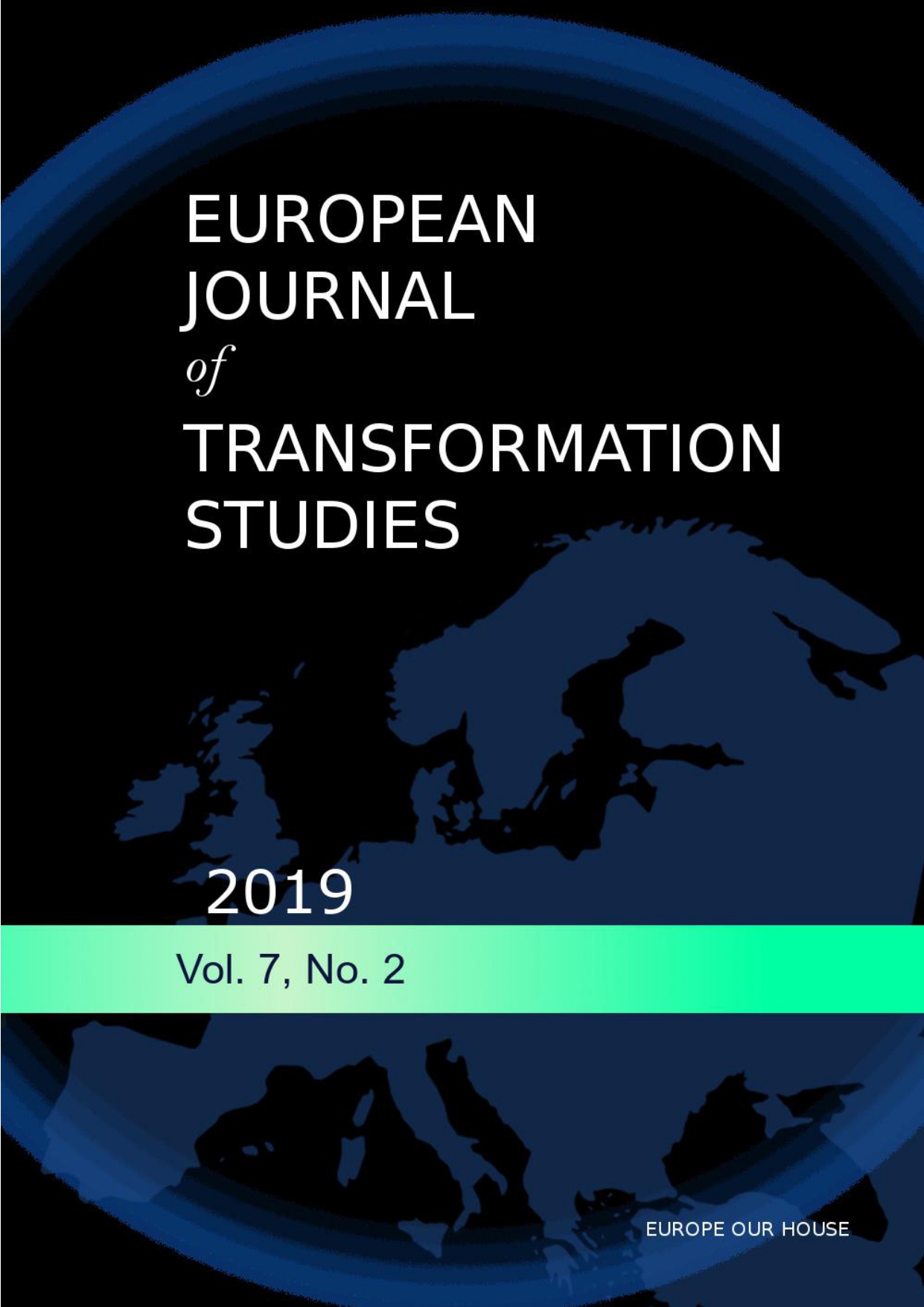Comparison of External Indebtedness and Debt Sustainability Development in V4 Countries
Keywords:
foreign indebtedness, solvency, liquidity, debt sustainability, capital inflowAbstract
Foreign indebtedness is an important indicator of macroeconomic and financial stability of given economy. Especially regarding the financial crisis of 2008 this indicator regained importance. This article offers a comparative analysis of Visegrad countries regarding the external indebtedness and debt sustainability. Poland, Hungary, Slovakia and the Czech Republic went through a similar transformation process and with the exception of Slovakia they still have their own national currencies. Foreign indebtedness is thus one of the crucial indicators for their monetary development, also regarding that in the past these countries were viewed as one region, which represented the possibility of spill-over effects. The aim of the article is to find out if a negative trend in the development is present in V4 countries as far as the external indebtedness is concerned.
Downloads
References
Boddewyn, J., (1965), The Comparative Approach to the Study of Business Administration. The Academy of Management Journal. Vol. 8, No. 4. 1965. Pp. 261-267 Available at: https://www.jstor.org/stable/255342?seq=1#page_scan_tab_contents [1.2. 2018].
Brůna, K., (2013), Koncept udržitelnosti negativní čisté investiční pozice a jeho aplikace na příkladu České republiky v letech 1999-2011, Politická ekonomie, 2013, 61, No 1., pp. 67-90. ISSN 0032-3233.
Cohen, D., (1997), Growth and External Debt: A New Perspective on the African and Latin American Tragedies, Centre for Economic Policy Research Discussion Paper, No. 1753, pp. 1-17.
Cordella, T., Ricci, L., Arranzi, M.R. (2006), Debt Overhang or Debt Irrelevance?: Revisiting the Debt-Growth Link. IMF Working Paper No. 05/223. SSRN. Available at: https://papers.ssrn.com/sol3/papers.cfm?abstract_id=888092 [1.2. 2018].
CNB (2018), Platební balance, ČNB, Available at: https://www.cnb.cz/cs/statistika/platebni_bilance_stat/index.html. [1.2.2018].
Durčáková, J., Mandel. M (20047), Mezinárodní finance. Management Press. Praha. 2007. ISBN 978-80-7261-170-6.
Easterly, W. R., (2001), Growth Implosions and Debt Explosions: Do Growth Slowdowns Cause Public Debt Crises?, Contributions to Macroeconomics, Vol. 1, No. 1, Article 1, pp.1-24.
Eurostat (2018a), Net external debt - annual data, http://ec.europa.eu/eurostat/tgm/table.do?tab=table&init=1&language=en&pcode=tipsii20&plugin=1.
Eurostat (2018b), Net international investment position – annual data. http://ec.europa.eu/eurostat/tgm/table.do?tab=table&init=1&plugin=0&language=en&pcode=tipsii10&tableSelection=1 [1.8.2018].
IMF (2003), External Debt Statistics, Guide for Compilers and Users. MMF. Available at: http://www.imf.org/external/pubs/ft/eds/Eng/Guide/index.htm. [1.2.2018].
Krugman, P. (1988), Financing vs. Forgiving a Debt Overhang, Journal of Development Economics, Vol. 29, pp. 253-268.
MNB (2018), Data according to BPM6 Methodology, Magyar Nemzeti Bank. Available at: https://www.mnb.hu/en/statistics/statistical-data-and-information/statistical-timeseries/viii-balance-of-payments-foreign-direct-investment-international-investmentposition/balance-of-payments-international-investment-position/data-according-to-bpm6-methodology [1.2.2018].
NBP (2018), Statystyka bilansu płatniczego. Narodowy Bank Polski. Available at: http://www.nbp.pl/home.aspx?f=/statystyka/aktywa_rezerwowe.html. [1.2.2018].
NBS (2009), Výroční zpráva NBS. Národná Banka Slovenska. Available at: https://www.nbs.sk/_img/Documents/_Publikacie/VyrocnaSprava/VSNBS09.pdf [1.2.2018].
NBS (2018), Platební bilance. Národná Banka Slovenska. Available at: https://www.nbs.sk/sk/statisticke-udaje/statistika-platobnej-bilancie/medzinarodnainvesticna-pozicia [1.2.2018].
Patillo, C ., Poirson, H., Ricci, R, (2004), What Are the Channels Through Which External Debt Affects Growth? IMF Working Paper, No. 04/15. January 2004. Available at: https://www.imf.org/en/Publications/WP/Issues/2016/12/30/What-Are-the-ChannelsThrough-Which-External-Debt-Affects-Growth-17021 [1.2.2018].
Reinhart, C.M., Rogoff, K.S., Savastano, M.A., (2003), Debt Intolerance, The National Bureau of Economic Research, Working Paper 9908. (DOI): 10.3386/w9908. Available at: http://www.nber.org/papers/w9908 [1.2.2018].
Sachs, J., (1989), The Debt Overhang of Developing Countries, in Guillermo Calvo, Ronald Findlay, Pentti Kouri and Jorge Braga de Macedo (eds.), Debt, Stabilization and Development: Essays in Memory of Carlos Diaz-Alejandro, Blackwell. Oxford, pp. 80-102.
Schclarek, A. (2004), Debt and Economic Growth in Developing and Industrial Countries, Working Papers 2005:34, Lund University, Department of Economics. Available at: https://ideas.repec.org/p/hhs/lunewp/2005_034.html [1.2.2018].
Serieux, J., Samy, Y., (2001), The Debt Service Burden and Growth: Evidence from Low Income Countries’. WIDER Conference on Debt Relief, 17-18 August. Helsinki: UNU/WIDER. Available at: https://www.researchgate.net/publication/254838017_The_debt_service_burden_and_growth_Evidence_from_low_income_countries [1.2.2018].
Task force on finance statistics (2014), External Debt Statistics: Guide for compilers and users. Available at: http://www.tffs.org/edsguide.htm [1.2.2018].

 Academic Scientific Journals
Academic Scientific Journals



